Bringing sensibility to the sport
Published on January 3rd, 2022
The evolution of yacht design continues to refine performance, but nothing comes cheap. Faster boats are harder to sail, requiring elite crew to sail them. When you see the hot boats, there is often a payroll too.
Plus high performance tends to come from space-age materials, and sending astronauts into the galaxy is expensive. Keeping up with the Jones has sailing on the brink as there just aren’t many that can keep up.
Club-owned twenty something foot keelboats have been somewhat of a solution, providing a playing field for those that want access to racing without much investment. New York Yacht Club took it to another level when they developed their 20-boat IC37 fleet, and now the offshore equivalent is underway in Europe.
This new boat is the fruits of an international architecture competition organized by France’s National Offshore Racing Union (UNCL) in partnership with the Royal Ocean Racing Club (RORC) in the UK, and the Storm Trysail Club in the USA.
With the preliminary design study phase drawing to a close, the ground is now being prepared for the construction of the first Class 30, with the next phase of the project underway, which is the development of the detailed construction plans. These will be completed by the end of March 2022.
The new Class 30 design will offer two different specifications; a Club and One Design version, with the Club offering being seen as a tool for training, learning about, and competing on the offshore racing circuit.
Alongside the constant involvement of the competition winners, VPLP naval architecture firm and Multiplast yard, one of the objectives of the project is for the Class 30 Club boat to have a competitive ready to sail price tag of under €100,000 (113,000 USD).
At this early stage of the program, the project has been very well received with over thirty reservations of production boat numbers recorded on the UNCL – Yacht Club de France stand at the Nautic boat show in Paris, where the launch process began in earnest together with the presentation of the model.
Concerning the build schedule, the study phase has been extended to finalize the tooling and moulds so that construction of the production boats can commence at the beginning of 2023, with the aim of having a few of the boats competing by spring.
Depending how the order book evolves, promoters of the production boat will consider in due course whether or not to put in place an additional mould to increase production capacity in France, whilst evaluating the development of a license program overseas.
In addition to the very contemporary lines and a series of simple and inexpensive solutions, what has come off the drawing board of VPLP-Multiplast has resulted in fitting the whole boat and its rig into a 40-foot container.
While container transport was not a prerequisite of the initial specifications, it was quickly viewed as a major benefit in ensuring the best possible distribution of the one-design via both road and sea transport. The design of a transport cradle is also envisaged with this in mind.
In line with the wishes of the project’s stakeholders, particular attention has gone into the pre-manufacture studies of the first prototype to ensure the best possible control of the budget for the production boats, which is a key aspect of the project.
The main aim of the class is to set up a sports program enabling sailors – owners and clubs – to get out racing at the highest level as soon as possible on a variety of course types and stretches of water.
To this end, the one-design is intended to provide an optimized response to the IRC measurement criteria. This option will pave the way for an extensive one-design race program both in France, UK, and overseas, around the cans and offshore.
UNCL and RORC are also very keen to quickly schedule in a ‘Class 30 Tour’, an event which will serve as a reminder of the project’s suitability and ambition for training and replenishing a whole generation of offshore racing crew and skippers of renown. This Class 30 Tour could travel with crews going back and forth between the English and French coasts.
It is the intention to set-up class associations for both the Club and One Design to develop and manage the Class 30 (rules and racing program), as well as being a forum for sharing ideas, training initiatives and managing and dealing with any issues that are relevant to the class.
“Managing to combine performance, simplicity and fun with this boat, which aims to connect dinghy sailing and offshore racing, is an extremely motivating challenge for our whole team,” said Simon Watin,of VPLP design. “Following on from our fine experience on the Figaro 3, it’s another step forward into the world of production monohulls for us.”
“We’re investing a great deal of energy into this project to ensure the boat is accessible and easy to maintain, whilst also being quick and fun,” said Dominique Dubois of Multiplast. “It’s an ambitious challenge and just the kind of project we love taking on.”
Project Specifications:
• Class 30 Club: a basic version that is simplified yet high-performance, for training offshore racing crew and one-design racing at a particularly competitive ready-to-sail introductory price enabling it to be purchased by as many people as possible.
• Class 30 One Design: Club version to which kit integrating various fit-out modules has been added (electronics, navigation and galley modules, ballast tanks…), designed to expand its scope of use and performance for offshore racing. The Class 30 One Design version enables a duo or crew to race in a one-design class as well as be competitive in IRC.
Key points of the Class 30 One Design project:
• A boat that is great to sail: seated comfortably at the helm or out on the rail, on a hull which is not too wet, with a large cockpit for carrying out maneuvers in crewed format.
• A design which keeps a tight rein on cost:
– Simple forms with minimal developed surface area.
– A structure and assembly geared around the production of a one-design series.
– A pared-back deck layout and rig.
• Significant focus on eco-design, with the overall consideration of the construction as well as the uses and manner of sailing.
• A powerful and versatile hull for a boat which is evolutionary on every point of sail.
• A light, effective, and accessible deck layout to prioritize dynamic trimming and favor learning within crewed sailing.
Questions: class30@uncl.com


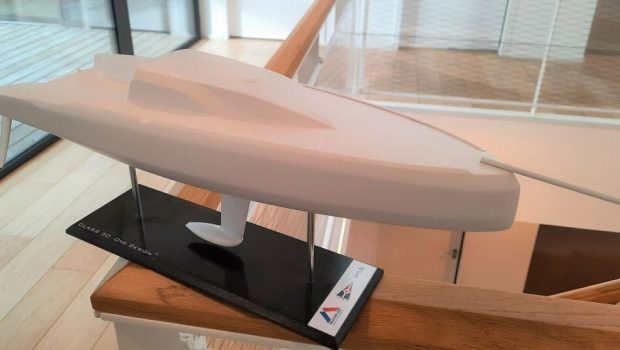

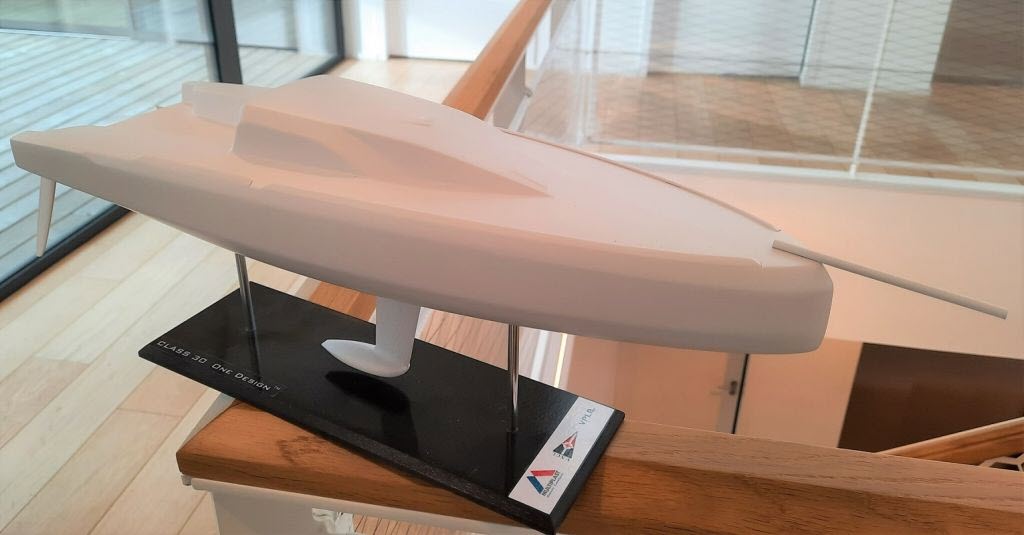

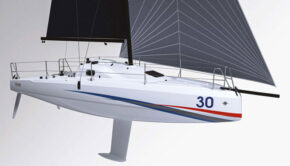
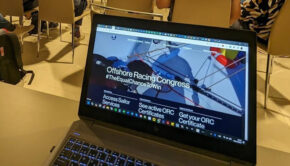
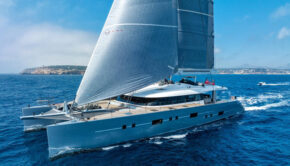
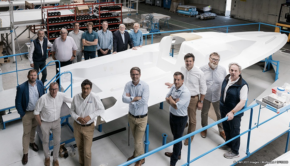
 We’ll keep your information safe.
We’ll keep your information safe.